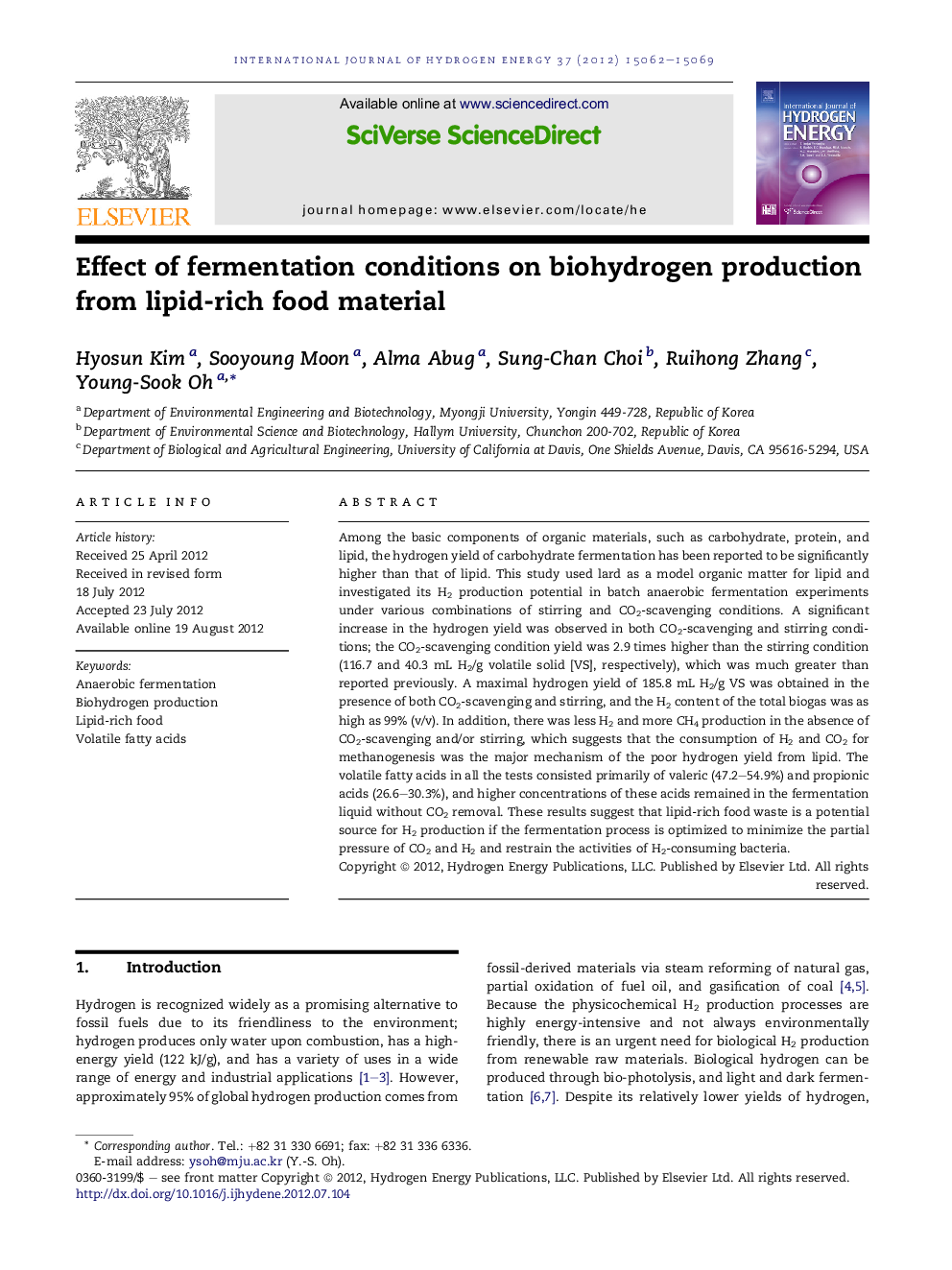| کد مقاله | کد نشریه | سال انتشار | مقاله انگلیسی | نسخه تمام متن |
|---|---|---|---|---|
| 1274514 | 1497549 | 2012 | 8 صفحه PDF | دانلود رایگان |

Among the basic components of organic materials, such as carbohydrate, protein, and lipid, the hydrogen yield of carbohydrate fermentation has been reported to be significantly higher than that of lipid. This study used lard as a model organic matter for lipid and investigated its H2 production potential in batch anaerobic fermentation experiments under various combinations of stirring and CO2-scavenging conditions. A significant increase in the hydrogen yield was observed in both CO2-scavenging and stirring conditions; the CO2-scavenging condition yield was 2.9 times higher than the stirring condition (116.7 and 40.3 mL H2/g volatile solid [VS], respectively), which was much greater than reported previously. A maximal hydrogen yield of 185.8 mL H2/g VS was obtained in the presence of both CO2-scavenging and stirring, and the H2 content of the total biogas was as high as 99% (v/v). In addition, there was less H2 and more CH4 production in the absence of CO2-scavenging and/or stirring, which suggests that the consumption of H2 and CO2 for methanogenesis was the major mechanism of the poor hydrogen yield from lipid. The volatile fatty acids in all the tests consisted primarily of valeric (47.2–54.9%) and propionic acids (26.6–30.3%), and higher concentrations of these acids remained in the fermentation liquid without CO2 removal. These results suggest that lipid-rich food waste is a potential source for H2 production if the fermentation process is optimized to minimize the partial pressure of CO2 and H2 and restrain the activities of H2-consuming bacteria.
► We used lard as a model lipid and investigated its H2 production potential.
► Methanogenesis was the major mechanism of the poor hydrogen yield from lipid.
► Propionic and valeric acids were found to be major VFAs of lard fermentation.
► Maximal H2 production was obtained by CO2-scavenging and stirring.
► H2 production potential of lard was comparable to carbohydrate-rich materials.
Journal: International Journal of Hydrogen Energy - Volume 37, Issue 20, October 2012, Pages 15062–15069